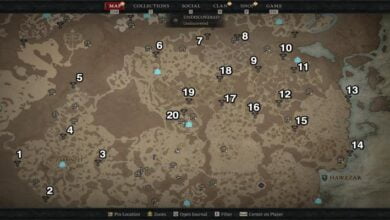I’m So Relieved: Baldur’s Gate 3 Abandons D&D’s Alignment System
The Flaws of D&D Alignments in Videogames
D&D alignments have always been a source of frustration. Regardless of the edition, they have never quite fit well in tabletop games, and they fare even worse in videogames. That’s why it’s such a relief to hear that Baldur’s Gate 3 has decided to abandon them altogether.
For the uninitiated, alignment in D&D is a way to categorize a character’s morality. Different editions have different alignment systems, but the most widely used one rates characters on a lawful vs chaotic and good vs evil axis. For example, a Lawful Good character is kind and just, always adhering to the laws of the land. In contrast, a Chaotic Evil character follows their darkest desires, inflicting pain and suffering whenever they please. Characters can also be neutral on one or both of these axes. A Chaotic Neutral character prioritizes freedom and self-determination above all else, while a True Neutral character seeks balance in all aspects of life. As for a Neutral Good character… well, let’s circle back to that one.
The Awkwardness of Alignment
The alignment system has persisted for so long due to nostalgia and tradition, but it has always been clumsy and oversimplified. It’s restrictive enough to hinder complex character development, yet vague enough that people often get heated when discussing interpretations of different alignments. Countless pointless arguments about the ethics of fantasy worlds have sprung from these alignments. Instead of debating time travel and baby Hitler, D&D players find themselves arguing over whether it’s Lawful Good for a Paladin to kill a Chaotic Evil baby orc. It’s a hypothetical that is both tiresome and frustratingly relevant to gameplay.
In many editions of D&D, alignment is deeply ingrained in the game’s core rules. It can restrict your choice of character class, impose limitations on which spells you can cast, and modify the effects of certain spells on you. Paladins, in particular, risk losing access to their class abilities if they deviate from the Lawful Good alignment, reducing them to mere individuals in shiny armor. Consequently, many Paladins find themselves engaged in lengthy philosophical debates with their Dungeon Masters.
The Difficulty of Implementing Alignment in Videogames
Videogames face an additional challenge when trying to incorporate alignment systems. Without a Dungeon Master to argue with, developers have struggled to create satisfying alignment mechanics. The nature of the system requires games to account for an extensive range of character viewpoints in dialogue choices. More often than not, this results in awkward and contrived moral dilemmas.
Consider this scenario: “Thanks for saving my cat from the tree, adventurer! Here’s your 100 gold reward.” The dialogue options might be as follows:
- [Lawful Good] Think nothing of it, citizen—and please, keep the gold.
- You’re welcome, thanks for the gold.
- [Chaotic Evil] I only got your cat down so I could murder it—and you!!!
As you can see, it’s not a flexible system for delivering nuanced and interesting choices. Furthermore, alignment has uncomfortable implications in D&D’s world-building. Classifying certain sapient beings as inherently good or evil from birth raises questions about the underlying morality in the game’s setting. This issue is exacerbated by D&D’s historic use of the word “race” instead of “species”, which uncomfortably echoes real-world discriminatory ideas.
The Real World’s Complex Morality
In the real world, right and wrong are far from black and white. They are messy, subjective, and subject to constant debate. By making good and evil literal, objective forces that every character is influenced by, D&D forces sweeping judgments about what is always good and evil. For instance, if orcs are born evil, does that mean good people should strive to eliminate them entirely? The implication is troubling, as it turns our lighthearted fantasy world into a pro-genocide narrative.
Wizards of the Coast’s Shift Away from Alignment
Recognizing these flaws, Wizards of the Coast has been gradually downplaying the importance of alignment in recent editions of D&D. With the removal of alignment restrictions on classes and innate alignments of races, the next update of 5e may even phase out alignment entirely. Baldur’s Gate 3, firmly based on the 5e ruleset, has taken the step early in collaboration with WOTC. This decision allows Larian Studios to create a more nuanced story and world, free from the constraints of an outdated morality system. Players can now build characters without being pigeonholed into certain personality types based on their mechanical choices. Finally, we can be grateful that we no longer need to ponder the morality of stacking explosive barrels next to an NPC as a True Neutral character.
In conclusion, the abandonment of D&D’s alignment system in Baldur’s Gate 3 is a welcome change. This move aligns with Wizards of the Coast’s efforts to prioritize flexibility and nuanced storytelling over rigid moral frameworks. By breaking free from the constraints of a system conceived 50 years ago, Baldur’s Gate 3 has the opportunity to create a truly immersive and engaging experience.


